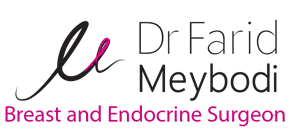Lipofilling (Fat Grafting)
What is lipofilling?
Lipofilling, also known as Autologous Fat Grafting, is a minimally invasive reconstructive technique, using a patients’ own fat cells to replace volume loss created by the treatment of breast cancer or congenital abnormalities.
What are the indications of Lipofilling?
The benefits of lipofilling are the correction and prevention of defects arising from surgery for:
- Breast cancer
- Prevention of breast cancer
- Correction of defects relating to congenital abnormalities
What does lipofilling involve?
Before the lipofilling procedure takes place, your surgeon will mark the areas needing fat transfer. You will be asked to show the areas which need volume replacement - your input is important to us, and we encourage you to share your thoughts
The procedure itself is performed under general anaesthesia and has three components:
- Harvesting healthy fat from the abdomen and/ or thighs. This is performed by using a needle introduced via small incisions.
- Processing healthy fat to separate healthy fatty cells. The harvested material will be centrifuged to maximise the concertation of healthy fatty cells and stem cells for grafting.
- Grafting - healthy fatty tissue will be transferred to the defects in the breast or chest wall.
What can you expect after the lipofilling procedure?
You will be discharged home on the same day of the procedure, and our team will organise a follow-up appointment in 10-14 days.
The recipient area will be bruised for a few days. The volume transferred to the recipient area will sightly decrease with time due to reabsorption; that’s why this procedure needs to be repeated to achieve larger volume lipofilling.
The donor site may also develop some bruising. We recommend wearing abdominal garments or compression stockinets to help with pain and reduce the chance of bleeding and bruising.
Patients usually resume normal activity in one to two weeks.
Can patients who’ve previously had breast reconstruction benefit from lipofilling?
For patients who have had breast reconstruction in the past, lipofilling can be used to achieve better prosthetic coverage and add the “padding effect”. Fat grafting can also be used to correct rippling; contour defects and reduce the damaging effect of radiotherapy on the reconstructed breast skin.
Can lipofilling be used for total breast reconstruction?
As the amount of tissue transferred which each session is limited, total breast reconstruction needs multiple sessions of lipofilling. Only small breasts can be totally reconstructed by lipofilling.
Lipofilling can be used for delayed breast reconstruction by preparing thin or irradiated chest skin flaps before inserting a tissue expander or autologous flap surgery.
Can lipofilling help with breast and chest wall pain after treatment of breast cancer?
Chronic pain after breast cancer treatment is a complex problem. Early studies are suggesting that lipofilling can be effective for the management of chronic pain after breast cancer treatment. However, the level of effectiveness of fat grafting on chronic pain can vary.Further studies in the future can help prove the effectiveness of fat grafting on chronic pain.
Is Lipofilling safe?
Previously concerns had been raised regarding the safety of lipofilling in the breast, however, several studies published regarding the safety of this procedure have since dismissed these concerns.
Do Medicare and my private insurance cover Lipofilling?
Yes. From 1st November 2021 patients will receive Medicare rebates for clinically relevant autologous fat grafting services.







